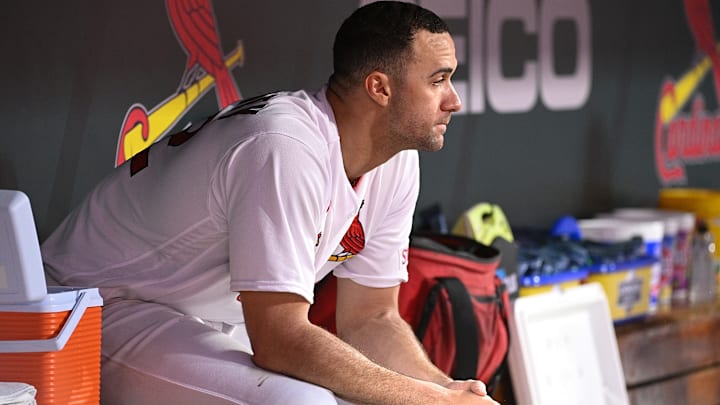Why did the plan fail?
Now that we've established the "who", we must answer the "why". Fans will never fully know the ins and outs of player development in any organization. While assumptions can be gleaned out of quotes from reporters, management, and players, we will never be able to know the ins and outs of player development and the minor league system.
One explanation for the failure of prospects to rise in time can be attributed to the lost minor league season in 2020 and the abbreviated 2021 minor league season. Zack Thompson had only pitched in high-A Palm Beach before 2021, but he was thrust up to AAA Memphis that year. He hadn't pitched in true, competitive games in 2 years, but he was pushed to the highest level in the minors. His 7.06 ERA and 2-10 record that year is evidence of him not being ready.
Matthew Liberatore had only pitched in low-A in 2019, and he, too, was pushed to AAA Memphis in 2021. Libby experienced more success, a modest 4.04 ERA that year, but he was also negatively affected by the lost time in the minors. Given more complete ramp-ups in 2020 and 2021, and these two lefties could have been ready to contribute in the majors as early as 2022.
More recent pitching prospects such as Gordon Graceffo and Michael McGreevy were hampered by overuse in college and below-average velocity in their professional careers. The next pair of high-octane starting pitching prospects of Tink Hence and Tekoah Roby have as much pressure on them as their predecessors.
The Cardinals aren't the only team to struggle with developing pitchers. The Kansas City Royals and Los Angeles Angels drafted heavily on the pitching side of the game from 2018 until 2021, and very few of those picks have come to fruition. Teams like the Philadelphia Phillies (Andrew Painter) and Texas Rangers (Jack Leiter) placed big hopes on pitching prospects only for them to experience setbacks and injuries.
In regard to pitching development, something the organization can control, it appears as though the team is eons behind other organizations. Teams such as Cleveland Guardians, Los Angeles Dodgers, and Tampa Bay Rays consistently churn out league-average or better pitching prospects. What do they have that the Cardinals lack?
What these organizations share is a focus on spin rate and pure stuff. The Dodgers are known as "pitcher whisperers" due to their ability to mysteriously transform borderline pitchers into above-average studs. Movement is also a predominant focus in these organizations. Spin paired with wicked movement increases a pitch's ability to miss bats, something the best pitchers in the league have mastered.
Technology such as KinaTrax and pitching labs like Tread Athletics are notorious for transforming a pitcher's ability to throw. Adding pitches, changing arm angles, and even readjusting grips can help a pitcher improve. The Tampa Bay Rays were the first to use KinaTrax, and the Dodgers and Guardians have had players work with Driveline Baseball for nearly a dozen years.
The Cardinals were late to adapt Trackman, a technology that assists in tracking spin rates, velocity, and movement in pitches. Additionally, Cardinal players and prospects have only recently started working with Driveline and Tread.
Chaim Bloom's inclusion in the front office should help on the pitching development front. During his time in Tampa Bay, Bloom instituted a system that helped to develop the most 2+ WAR pitchers in baseball for a time. With Randy Flores's drafting expertise and Chaim Bloom's development acumen, the Cardinals could form a potent pitching pipeline in short order.
